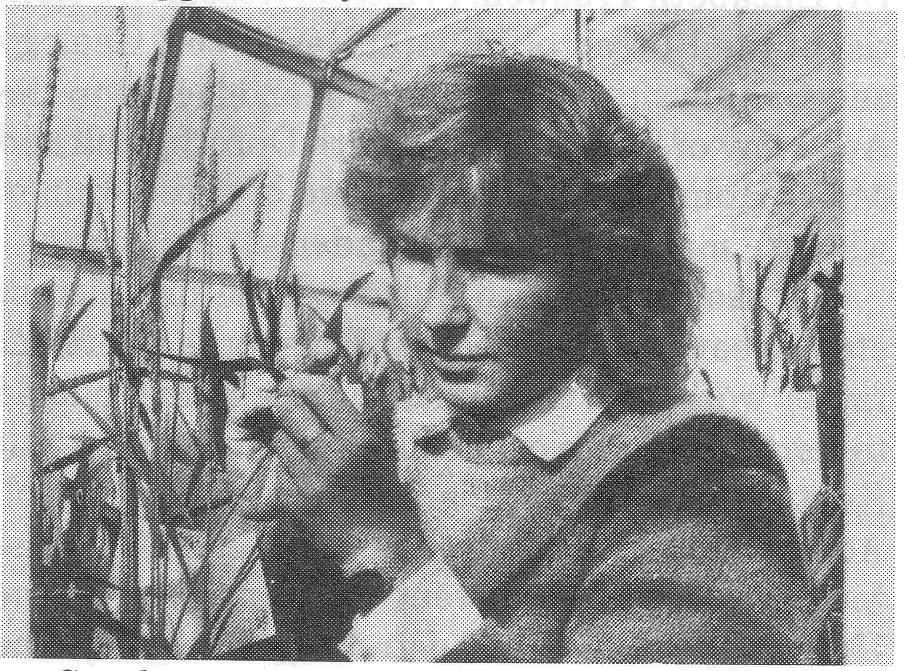
Published in Wisenet (Journal of the Women in Science Enquiry Network), No. 2, August 1985, p 9
pdf of article
WOMEN IN SCIENCE
In a continuing series we will feature Australian women of distinction and achievement who have contributed to scientific endeavour and have promoted the status of women.
In this issue we introduce Sarah Ryan, plant geneticist and Elizabeth Truswell, Palynologist.

Sarah Ryan doesn't think her career as a research scientist has been particularly hindered by being a woman. Her experiences are typical of many younger women scientists, and show that some good luck helps in getting ahead.
Born in 1951, Sarah obtained her first degree in agriculture at the University of Western Australia. She remembers that in her first-year class there were only 5 women out of 70 students, and that the same 5 women were among the 38 who survived to graduate. She went on to obtain her Ph.D. at UWA [University of Western Australia], doing research on the inheritance of the protein content of rapeseed.
After finishing her research but before writing her Ph.D. thesis, Sarah took a tutorship in Plant Sciences at the University of Melbourne for a year. At this time it would have been easy to delay or even drop the thesis; quite a few students fall by the wayside at this stage. Fortunately for Sarah, her tutorship gave her time for research, including both the thesis and other work.
Sarah's marriage broke up before she left Perth. If this had not happened, it would have been difficult for them to stay together while she pursued her career in a sequence of different cities.
Sarah next obtained a postdoctoral position at the University of Illinois to study the plant genetics of soybeans. She owed this position to being in exactly the right speciality and knowing someone who knew someone else.
Sarah doesn't consider that she has more than an average publication record (though the long period to carry out plant breeding experiments can limit the rate of publication), and that publications haven't been of primary importance in getting jobs. She has been successful at obtaining grant money. It helps to be in an applied field where there are bodies willing to fund research.
After two and a half years at Illinois, she obtained a research scientist position at the CSIRO Division of Plant Industry in Canberra, doing research as part of a team to understand and apply the genetic variation induced when wheat plants are put in tissue culture. This position was funded by a grant from the Rural Credits Development Fund for three years. Such positions funded by outside money are notoriously insecure, but Sarah has recently been offered an extension of two years supported by CSIRO funds.
Sarah is one of many scientists, female and male, who are surviving on contract positions. Unlike some other institutions, CSIRO at least has a policy that scientists who receive three contracts or last five years at CSIRO can receive redundancy payments if they are not extended. It seems to some people that, despite organisational policy, CSIRO tries to avoid the third-contract-type situation.
The basic way for research scientists to survive in the contract position game is to stake a claim on a research area which seems to require continued financial support, or which can attract external funding.
Sarah is not a 60-hour-per-week scientist. (Why should anyone have to be anyway?) She considers that there are other things worth doing in life, such as travelling and house renovating. Even though her future in research is far from guaranteed, Sarah's career shows that some women can get ahead in science. The tight economic situation means that even a limited degree of discrimination can have a drastic effect. If she continues to escape this, Sarah will indeed be one of the fortunate ones.
Brian Martin
Brian Martin's publications on science, technology and society